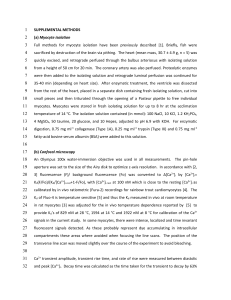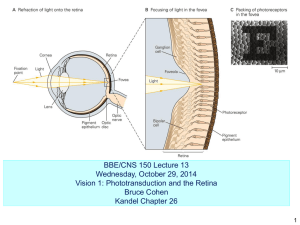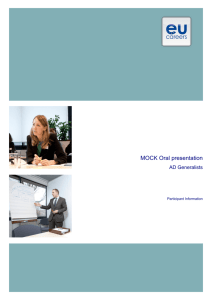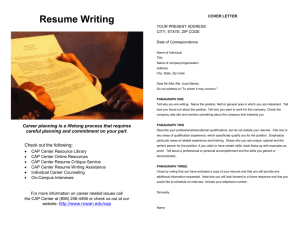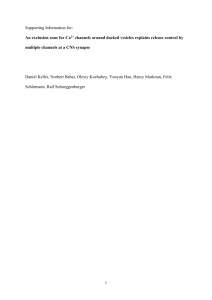Market_Excellence_Plan_v52
advertisement
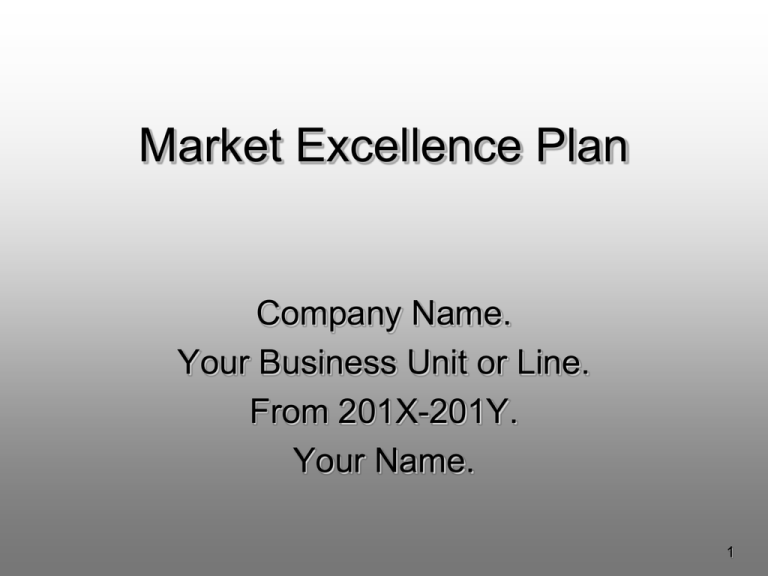
Market Excellence Plan Company Name. Your Business Unit or Line. From 201X-201Y. Your Name. 1 Manual. On the notes pages to each slide, you will find an explanation of what it is that you need to do. Make sure that you explain your analyses and choices. Do not assume we will understand without explanations. 2 Market Excellence Plan Your Business Roadmap to Success Prof.dr. Henry Robben h.robben@nyenrode.nl Prof.dr. Rudy Moenaert r.k.moeneart@tiasnimbas.edu drs. Peter Gouw peter.gouw@gfk.nl www.visioN2B.nl © Rudy Moenaert, Henry Robben & Peter Gouw 3 Part 1 Where and How Do We Compete Today? Analyzing The Present Internal and External Situations. 4 Business Objectives BHAG (‘Big Hairy Audacious Goal’) for _________ Commercial goals for next 3 years Commercial target for next year 5 Business Definition and History 6 Way-to-Market Architecture <company> Sales per channel (%) Direct Channels, e.g., •The Internet •Face to Face Nature of relationship, support & reputation Indirect Channels, e.g., •Distributors & Resellers •Suppliers •OEMs and Convertors Influence Sales per segment (%) Influencers, e.g., • Advisers •Regulatory institutions •Media Influence End-Customer Segments Segment 1 Segment 2 Segment 3 Segment 4 7 Contemporary Situation € (000) Products Market Segments <S1> <S2> <S3> <S4> <S5> <...> Total (€) Product Mix % Market <company> Market Size (€) Share (%) <P1> <P2> <P3> <P4> <P5> <P6> <....> Total (€) Market Mix % Segment Size (€) <company> Mkt. Share % Year -1: Year 0: Year 1: Year 2: Total Sales (000 €) : Year 3: 100 % (est.) (est.) (est.) (est.) (est.) 8 Competitive Analysis Competitors ... Suppliers ... Your Company ... Complementors ... Customers ... 9 Conclusions of the Competitive Analysis FORCE: CONCLUSION: 1. Your company : 2. Competitors : 1. Suppliers : 2. Customers : 3. Complementors : 10 STEP Analysis Social Context Technological Context Forces External to the Industry and to the Company Economic Context Political Context 11 External Analysis: Opportunities & Threats Opportunities 1. 2. 3. 4. 5. 6. 7. 8. 9. N. Threats 1. 2. 3. 4. 5. 6. 7. 8. 9. N. 12 Business Model for Resource 2 Resource 3 Resource 4 Resource 1 CA 1 CA 2 Resource 5 Resource 10 Resource 6 CA 3 Resource 8 CA 4 Resource 8 Resource 7 13 Internal Analysis: Competitive Advantage (‘Winners’) Competitive Advantage Explanation CA1: ______________________ CA1: ______________________ CA2: ______________________ CA2: ______________________ CAN: ______________________ CAN: ______________________ 14 Internal Analysis: Basic Requirements Basic Requirement 1. 2. 3. 4. 5. 6. 7. 8. 9. N. Performance Relative to Competition 1. 2. 3. 4. 5. 6. 7. 8. 9. N. 15 Sustainability Evaluation of the Present Situation / 1 Superior resources Durable demand Inimitability Substituta -bility Appropriability Efficiency Overall CA1 CA2 CAN 16 Sustainability Evaluation of the Present Situation / 2 17 Part 2 Where and How to Compete in the Future? Choosing the Hunting Grounds and the Hunting Strategy. 18 Market Excellence for the Future: Targeting Where to Compete? Key Market Segments/ Product Lines Why 1. 2. 3. 1. 2. 3. N. N. Your Choice for the Future Is:________________________. 19 Market Excellence for the Future: Differentiation For_________________ How to Compete? Competitive Advantages Why? CA1: ______________________ CA1: ______________________ CA2: ______________________ CA2: ______________________ CAN: ______________________ CAN: ______________________ 20 Future Business Model For____________. Resource 2 Resource 3 Resource 4 Resource 1 CA 1 CA 2 Resource 5 Resource 10 Resource 6 CA 3 Resource 8 CA 4 Resource 8 Resource 7 21 Part 3 How to Get There? Business Roadmapping 22 Business Roadmap: Defining the Strategic Projects Year 1 Projects 1. 2. 3. 4. 5. 6. 7. 8. 9. N. 1. 2. 3. 4. 5. 6. 7. 8. 9. N. Year 2 1. 2. 3. 4. 5. 6. 7. 8. 9. N. Year 3 1. 2. 3. 4. 5. 6. 7. 8. 9. N. Responsible / Accountable 1. 2. 3. 4. 5. 6. 7. 8. 9. N. 23 Marketing Score Card 201X: Marketing Calendar Actions Explanations Timing Costs Revenues Responsible 24 Part 4 Return on Business! Value@Firm & Value@Customer 25 Marketing Score Card 201X : Innovation New Products Marketing Actions Targets New Channels Marketing Actions Targets New Segments Marketing Actions Targets New Leads Marketing Actions Targets 26 Marketing Score Card 201X: Marketing Mix Productivity M-Mix Instrument #1 Focus (customers, channels, products) Targets M-Mix Instrument #N Focus (customers, channels, products) Targets 27 Marketing Score Card 201X: Customer Response Initiatives Targets Customer Satisfaction Customer Complaints % Lost Customers Brand Valuation 28 Marketing Score Card 201X: Financial Results Product Line 200X 200X+1 200X+2 Difference% Price% Volume% CGM % 29 Strategic Project Analysis / 1 Strategic Project Business Opportunity Feasibility Economic Results Leverage Overall SP1 SP2 SPN 30 Strategic Project Analysis / 2 31
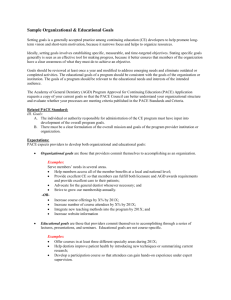
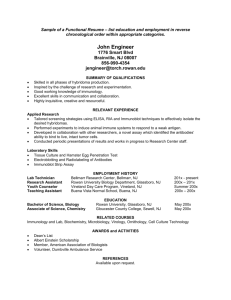


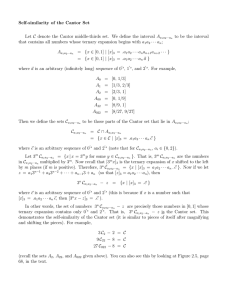


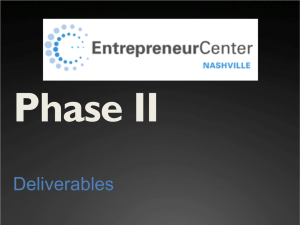

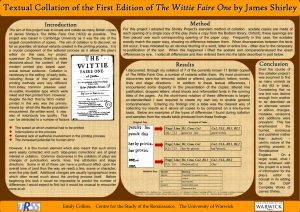
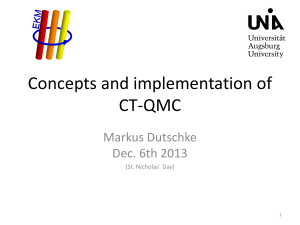
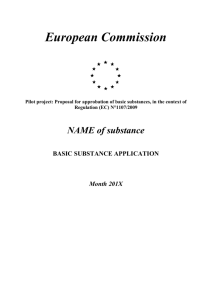
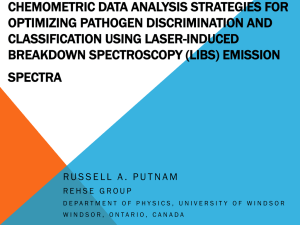
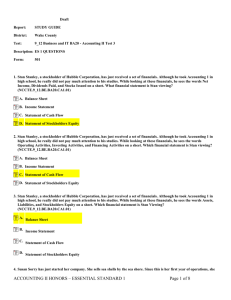
![Substantiation of the Rhod-2 as indicator of cytosolic [Ca2+] Rhod](http://s3.studylib.net/store/data/006893824_1-225923ad9f8cdb438dcdcf307ccbe9bd-300x300.png)
